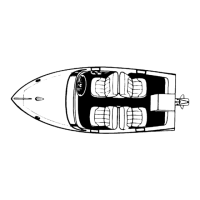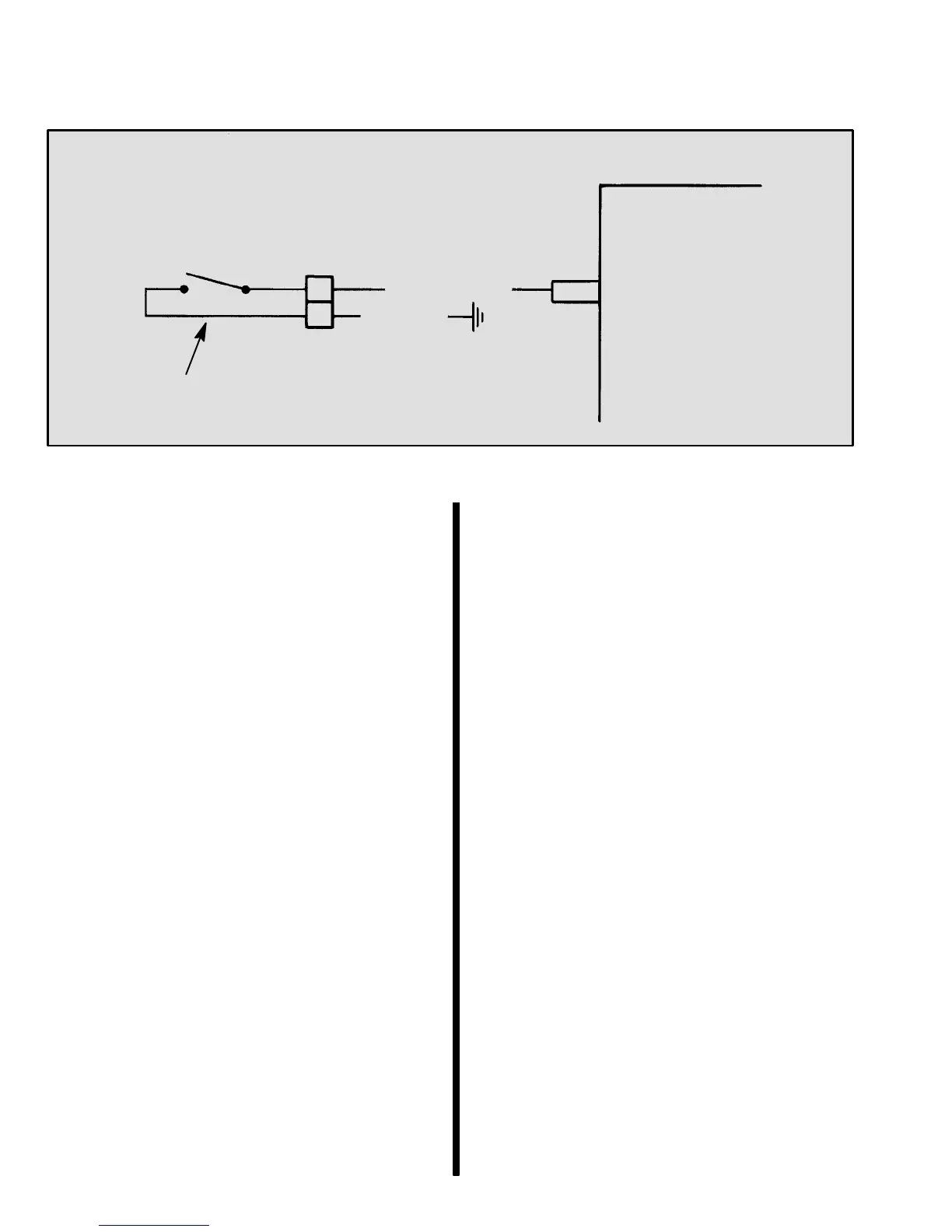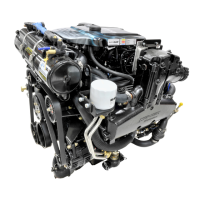90-823225--1 10965E-82 - ELECTRONIC FUEL INJECTION (MULTI-PORT AND THROTTLE BODY)
Lanyard Stop Circuit Check (Emergency Stop) Circuit Check
(1 of 2)
IN LINE 2 WAY
CONNECTOR
NORMALLY
OPEN
A
B
BLK
942 PNK
J1-21
ECM
LANYARD STOP SWITCH
LANYARD STOP SWITCH CIRCUIT
1996 AND EARLIER MODELS
NOTE: Some models are no longer equipped with
this option in the wiring harness. Connection of the
lanyard stop switch (if equipped) is performed at the
instrument panel.
CIRCUIT DESCRIPTION:
The Lanyard Stop circuit is a safety feature incorpo-
rated in boats to stop the engine in the event that the
operator is removed from a safe control position dur-
ing normal operation. The Lanyard Stop switch is a
normally open switch that is physically connected to
the operator by a tether. In the event that the operator
is removed from a control position, the tether con-
nected to the switch will be pulled out, closing the
switch. This information from the Lanyard Stop
switch will then be used by the ECM to cease engine
operation until the position of the switch is restored
to its normally open position and the ignition key
switch has been cycled.
TEST DESCRIPTION:
1. If a Lanyard Stop was recognized by the ECM,
cycling the ignition will clear the Lanyard Stop
condition in the ECM.
2. This step checks to see if the Lanyard Stop switch
is in the correct position. If the switch is closed, a
Lanyard Stop condition will exist.
3. This step checks for Lanyard Stop switch or Lan-
yard Stop circuitry that is shorted to ground.
4. This step identifies which half of the circuitry is
shorted to ground; i.e., ECM side or switch side.
5. This step identifies if the circuitry or ECM is the
cause of the short to ground.
DIAGNOSTIC AIDS:
An intermittent problem may be caused by a poor or
corroded connection, rubbed through wire connec-
tion, a wire that is broken inside the insulation, or a
corroded wire.
Any circuitry that is suspected as causing the inter-
mittent complaint should be thoroughly checked for
backed-out terminals, improper mating, broken
locks, improperly formed or damaged terminals, poor
terminal-to-wiring connections, corroded terminals
and/or wiring, or physical damage to the wiring har-
ness.

